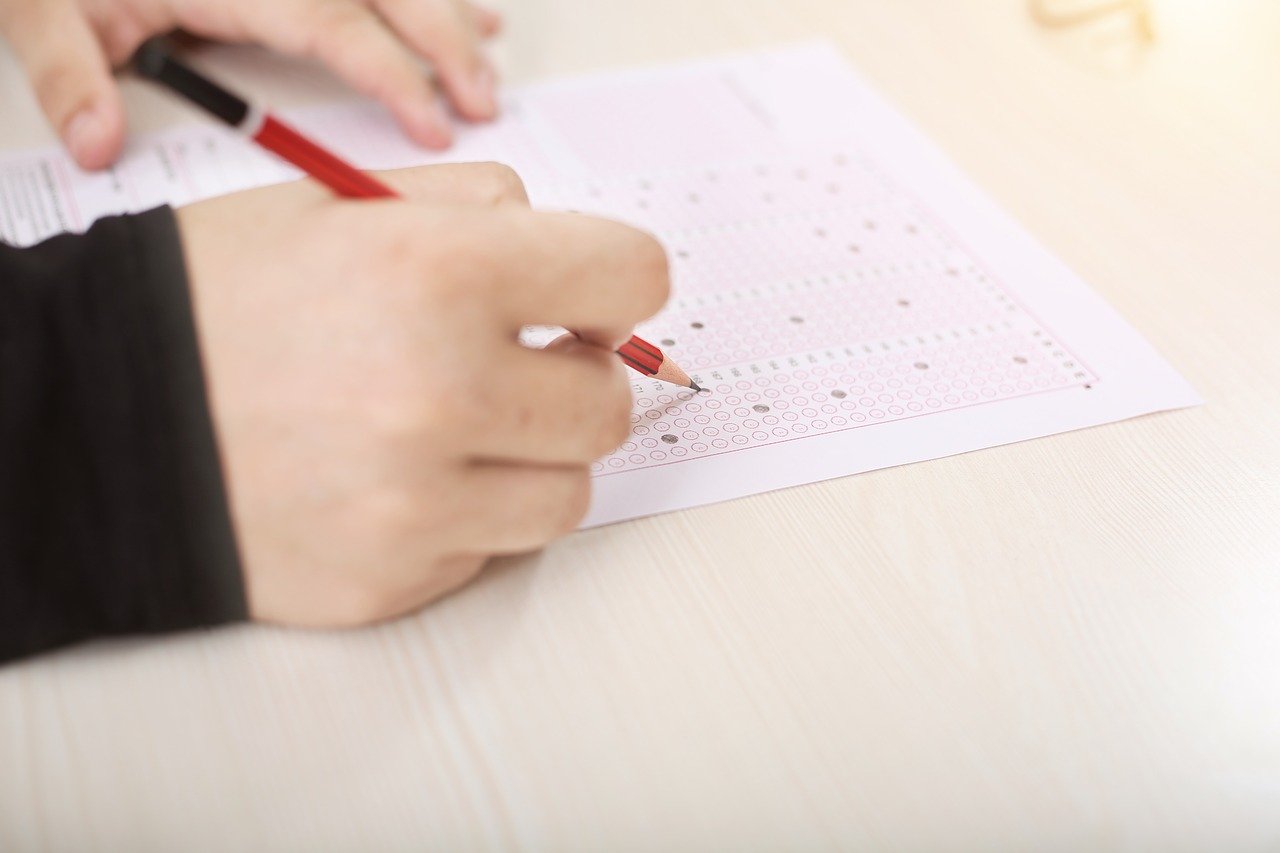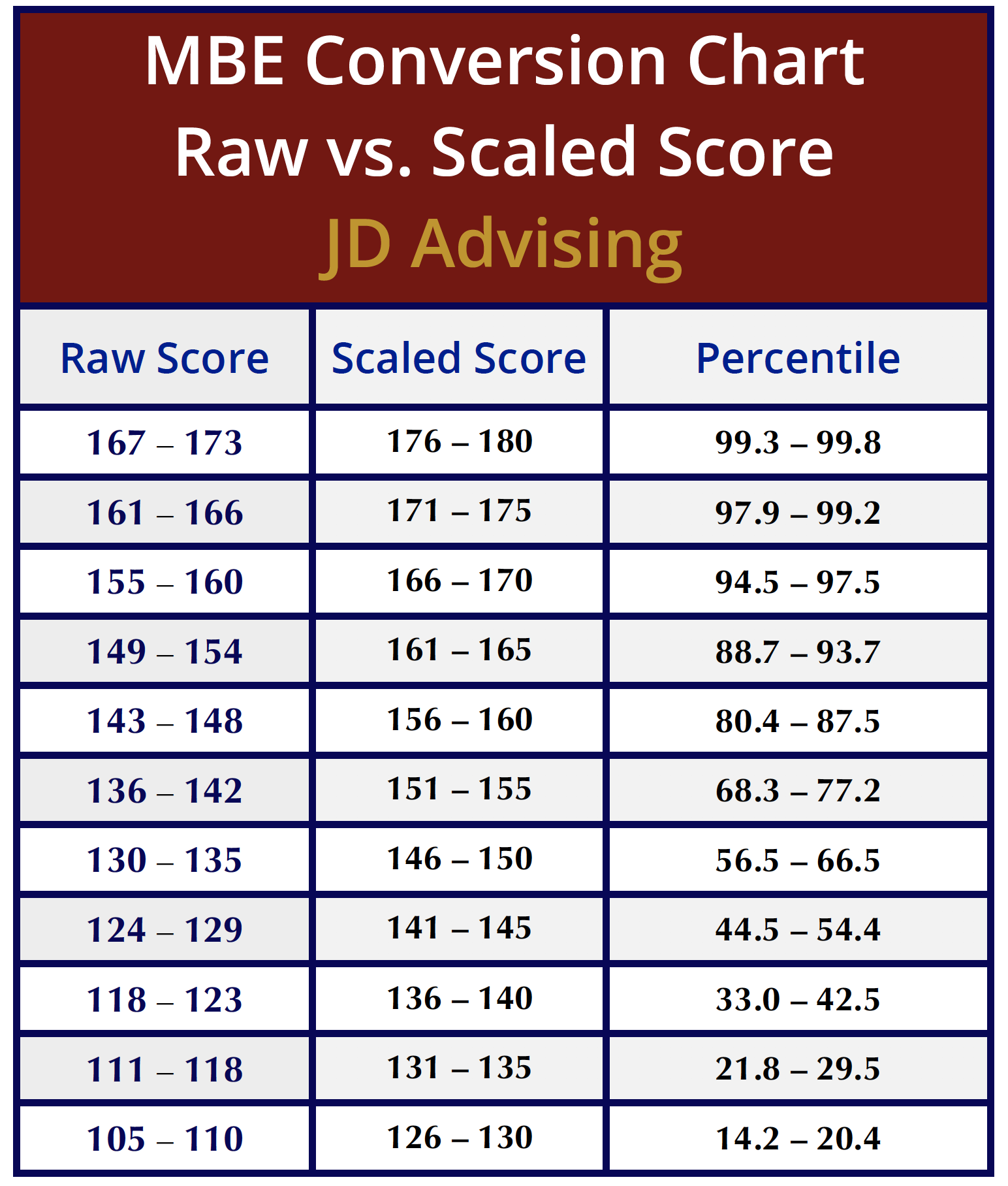What percentage of MBE questions do I need to answer correctly to pass?
One of the questions that we get asked the most is “What percentage of MBE questions do I need to answer correctly to pass?” This is not necessarily an easy question to answer because the National Conference of Bar Examiners (NCBE), the organization that writes and administers the multistate bar exam (MBE), no longer releases data on the “raw” score that will lead to a passing MBE score. However, we do have data at our disposal that serves as a guide! Here, we will tell you approximately what percentage of MBE questions you need to answer correctly to pass the MBE portion of the bar exam!
What percentage of MBE questions do I need to answer correctly to pass?
The short answer:
- If you are aiming for a MBE score of 131-135 (which is a passing score in jurisdictions that require scores of 262-270 to pass), you should aim for 58%-62%. We suggest aiming for at least 60% to be safe.
- If you are aiming for an MBE score of 136-140 (which is a passing MBE score in jurisdictions that require a 272-280 to pass) you should aim for 62%-65%. We suggest aiming for at least 65% to be safe.
- If you are aiming for an MBE score of 144 (which is considered passing in California), you should aim for about a 67%.
(If you are curious about the math, keep reading below.)
If you are unsure what a passing MBE score is in your state, look up your passing MBE score here.
The long answer:
Here is the long answer to figuring out what percentage of MBE questions you need to answer correctly to pass.
First: look up what converted score or “scaled score” you need to pass:
The NCBE does not tell you what “raw” score is passing. Rather, they will “convert” your raw score into a converted (or “scaled”) score by adding a number of points to your raw score. In other words, if a passing MBE score in your state is 135, you do not need to get 135 questions out of 200 to pass the MBE. (In fact, now only 175 of the 200 administered questions are scored — and you certainly do not need a 77% to pass the MBE!) However, you still want to know what converted score you need to pass the MBE. This will help you figure out what raw score you need.
So, the first thing you want to do if you are determining what percentage of MBE questions you need to answer correctly to pass is figure out what a passing MBE score is for your state (if you don’t already know). In most states, the passing score is between 130 and 140. (In California, it is 144.) If you are unsure, look up your passing MBE score here.
Second: check out our MBE raw v. converted score chart here.
If you are trying to figure out what you need to pass, find the scaled score that you are aiming for (again this is usually between 130 and 140 or 144 if you are taking the California bar exam). If you are in a jurisdiction like New York or DC, you will need a 133 as your scaled score. So look for this score in the middle “Scaled Score” column.
Then, look to the left and see what raw score you need. It looks like if you are aiming for a 133 “scaled” score you want somewhere between a 111 and 118 “raw” score. We’ll say you should aim for a raw score of about 115. This raw score is the number correct that an examinee got out of 190. So, do the math: 115/190 = 60.52%. That is the approximate percentage of questions that you need to answer correctly to “pass” the MBE in a state that requires a 133 as a passing MBE score.
KEY:
- RAW SCORE: This means the number correct (out of 190 scored questions) to pass. (So if you are trying to figure out the percentage, divide the raw score by 190. We do the math for you above.)
- CONVERTED SCORE: This is the number that your raw MBE score “converts” to after the NCBE does its magic and adds some additional points to your score.
- PERCENTILE: This tells you how you score in relation to other test takers. For example, if you are in the 20th percentile, you scored higher than 20% of exam takers. If you are in the 90th percentile, you scored higher than 90% of exam takers.
Note that this data comes from data that was released in 1998 by the NCBE. The NCBE no longer releases data, as of about five years ago. While this data may seem too old to use, the data surprisingly matches up with the same data we found from self-reported MBE scores from 2008 to 2013. So it looks like the raw v. scaled scores have not changed that significantly! It also seems to line up with how our bar exam students perform–e.g., those that achieve, say, 65%, usually achieve passing MBE scores.
However, one thing that has changed is the MBE. Here are a few notable changes from the past few years:
- Civil Procedure was added as an MBE subject in 2015.
- Only 175 questions are scored now. (190 used to be scored.)
- The national MBE mean has dropped.
Thus, this MBE raw score conversion chart should be used as guidance only! It should give you a general ballpark of how you are scoring. You should not depend on it.
Third: Keep in mind these few notes about the percentage of MBE questions you “need” to answer correctly to pass:
In most jurisdictions, there is no minimum MBE score!
In most jurisdictions, including Uniform Bar Exam jurisdictions, there is no “minimum” passing MBE score. So, for example, if you are taking the New York bar exam, you will need to get a 266 to pass. You should aim to get at least a 133 on the MBE and a 133 on the written portion when you practice. But, you do not “need” a 133 on each portion. You could just as easily pass with a 120 on the MBE and a 146 on the written portion! So, keep that in mind.
(There are some exceptions to this general rule – like Kentucky requires a score of 132 minimum on the MBE. South Dakota requires a minimum score of 135. And Palau requires a minimum score of 120.) Generally, however, the majority of states do not have a required minimum passing MBE score.
You should be using real MBE questions to evaluate if you are on track!
Instead of using questions invented by Barbri, Kaplan, or Themis, use actual official MBE questions! “Real” MBE questions are a much better gauge of whether you are on track to pass. (We define “real” MBE questions as those released by the NCBE. These closely resemble the style and format of the MBE. And a lot of issues tend to be retested in the same way!) You will be glad you used real questions on MBE day!
You can purchase real MBE questions here. If you are looking to review “MBE favorites”–that is, those issues that we have seen come up time and time again throughout the years on the MBE, check out our MBE Favorites series here.
Questions about what percentage of MBE questions you need to pass?
Feel free to contact us or post in the comments below!
Seeking MBE Assistance?
Seeking MBE Assistance?
- 📘 MBE Guide: Equip yourself with our FREE expert-crafted bar exam and MBE guides.
- Free Bar Exam Resource Center: Discover top resources, articles, and free webinars led by renowned bar exam professionals.
Top Resources as Vouched by our Students:
- MBE One-Sheets: One of our most highly acclaimed bar exam supplements!
- Bar Exam Outlines: Our comprehensive and condensed bar exam outlines present key information in an organized, easy-to-digest layout.
- MBE Private Tutoring: Opt for personalized, effective strategies.
- On Demand Bar Exam Course: Comprehensive bar exam preparation.
- Bar Exam Crash Course and Mini Outlines: Acclaimed and effective for a quick refresher.
- MBE Mastery Class, Real MBE Questions, and MBE Guide: Elevate your MBE preparation with these high-quality MBE supplements!
🔥 NEW! Check out our Repeat Taker Bar Exam Course and get introduced to our unmatched platinum Guarantee Pass Program.



